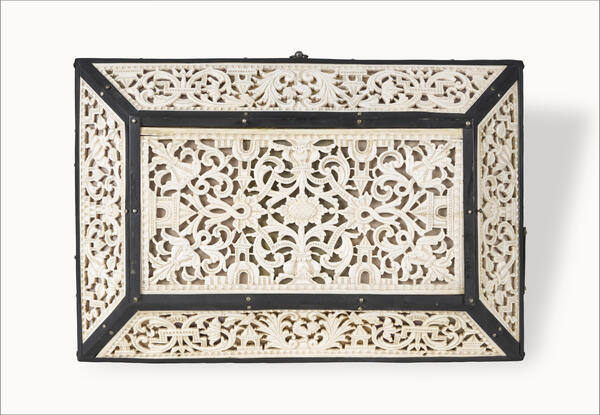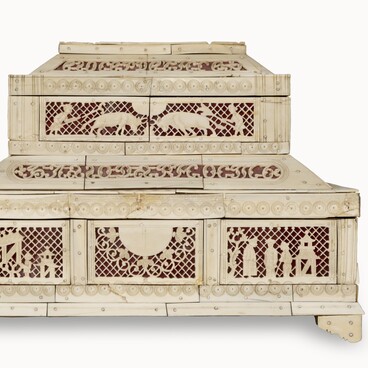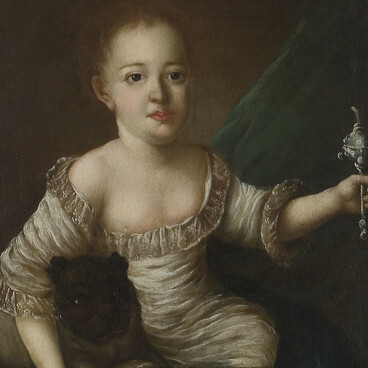The workshops of the Armory were called “chambers” and were located in stone rooms. The Armory was housed in a three-story building next to the Trinity Gate and occupied the top two floors. Since its establishment in the 15th–16th centuries, the Armory has functioned as a repository of royal weapons: sabers, bardiches, chain mail, armor, and helmets. In addition, cold weapons and guns were manufactured in the chamber, as well as defensive armor for the state army. The Armory managed not only arms-making, but also jewelry, icon painting, painting, gold painting and other workshops. Gunsmiths worked alongside with painters, including Simon Ushakov, Fyodor Zubov, Bogdan Saltanov, Ivan Bezmin, and Vasily Pozansky. Their tasks included painting royal mansions, Kremlin cathedrals, icons and parsunas (early secular portraits). Only gunsmiths were at first appointed as heads of the Armory Chamber, and from the end of the 17th century — boyars and okolnichy (court officials).
The heyday of the Armory Chamber came at the beginning and middle of the 17th century, when as a result of the centralization of the Russian state, many masters from Novgorod, Vladimir, Suzdal, Murom, Kazan, and Veliky Ustyug were brought to Moscow. Moreover, thanks to the policy of Alexis I of Russia, the army was rebuilt based on the European model, which made it possible to improve weapons production. Employees of the Armory Chamber were also engaged in negotiating deals on arming the soldiers and importing foreign-made arms to Russia. As the staff of the chamber was constantly replenished with new talents, the manufactured items were distinguished by a variety of ornaments and shapes. However, the working conditions remained difficult.
The displayed casket with a hinged lid, made in the style of the Moscow Baroque, was produced in the workshops of the Armory Chamber. Its sides are decorated with openwork large-scale ornamentation of lush flowering plants. Architectural elements of eastern buildings and threads imitating pearls are organically inscribed in the ornament. The casket features a tinfoil background superimposed on colored silk and silver overlays-fasteners, a decorative element of the overall composition. The inscriptions on the edges of the silver plates allow us to determine the exact date of its manufacture — 1750.
The heyday of the Armory Chamber came at the beginning and middle of the 17th century, when as a result of the centralization of the Russian state, many masters from Novgorod, Vladimir, Suzdal, Murom, Kazan, and Veliky Ustyug were brought to Moscow. Moreover, thanks to the policy of Alexis I of Russia, the army was rebuilt based on the European model, which made it possible to improve weapons production. Employees of the Armory Chamber were also engaged in negotiating deals on arming the soldiers and importing foreign-made arms to Russia. As the staff of the chamber was constantly replenished with new talents, the manufactured items were distinguished by a variety of ornaments and shapes. However, the working conditions remained difficult.
The displayed casket with a hinged lid, made in the style of the Moscow Baroque, was produced in the workshops of the Armory Chamber. Its sides are decorated with openwork large-scale ornamentation of lush flowering plants. Architectural elements of eastern buildings and threads imitating pearls are organically inscribed in the ornament. The casket features a tinfoil background superimposed on colored silk and silver overlays-fasteners, a decorative element of the overall composition. The inscriptions on the edges of the silver plates allow us to determine the exact date of its manufacture — 1750.




